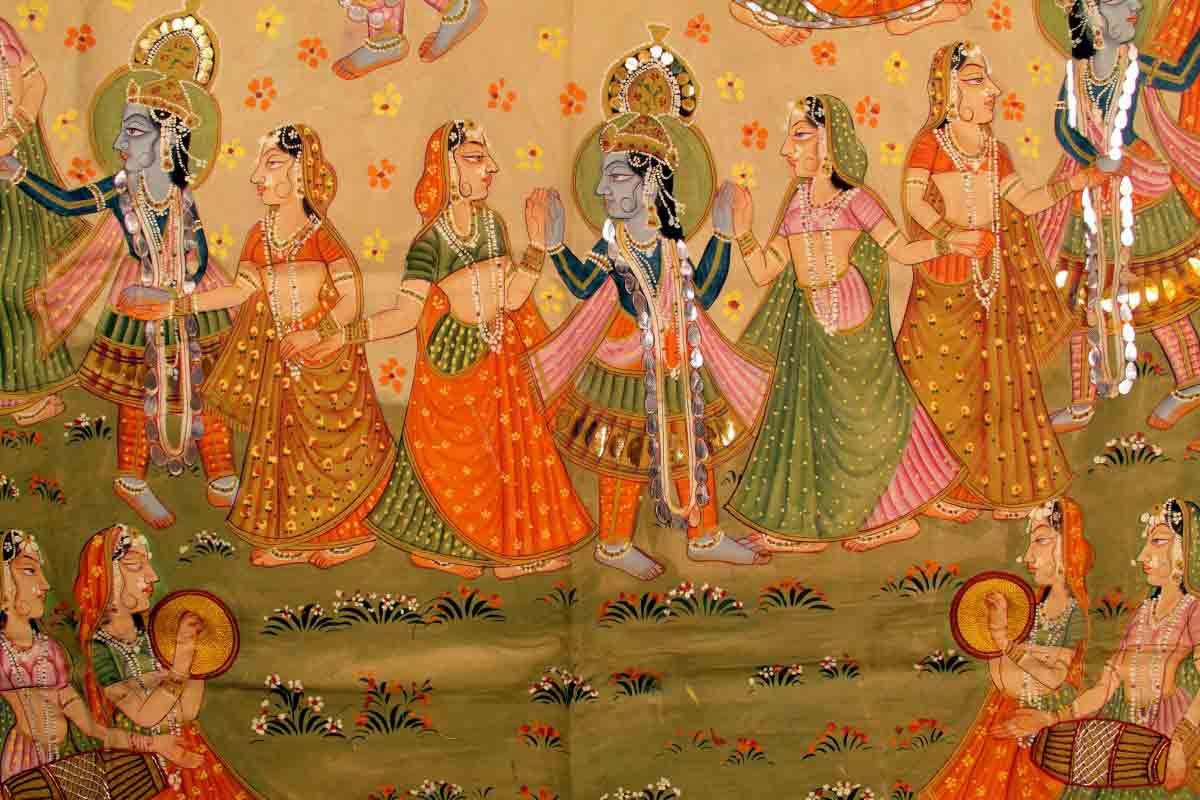ॐ श्री गुरुभ्यो नमः ॐ श्री शिवानन्दाय नमः ॐ श्री चिदानन्दाय नमःॐ श्री दुर्गायै नमः
Source of all Images in this Blog-post : Google Images : ‘Google Image Search’ will reveal the multiple sources of every single image shared in this Blog. For more details, kindly see ‘Disclaimer‘
Pichhwai paintings are large devotional Hindu painted pictures, normally on cloth, which portray Hindu God Krishna. They are mainly made for hanging in Hindu temples of the Pushtimarg devotional tradition, especially in the Shrinathji Temple in Nathdwara, Rajasthan, built around 1672.
These paintings are hung behind the idol of Shrinathji, a local form of Krishna and the centre of Pushtimarg worship, for depicting Krishna’s Leelas ( Divine Sporting ).
The purpose of Pichhwais, other than their artistic appeal, is to narrate the tales of Krishna to the illiterate masses. Temples have sets with different images, which are changed according to the Hindu calendar of festivals celebrating the deity.

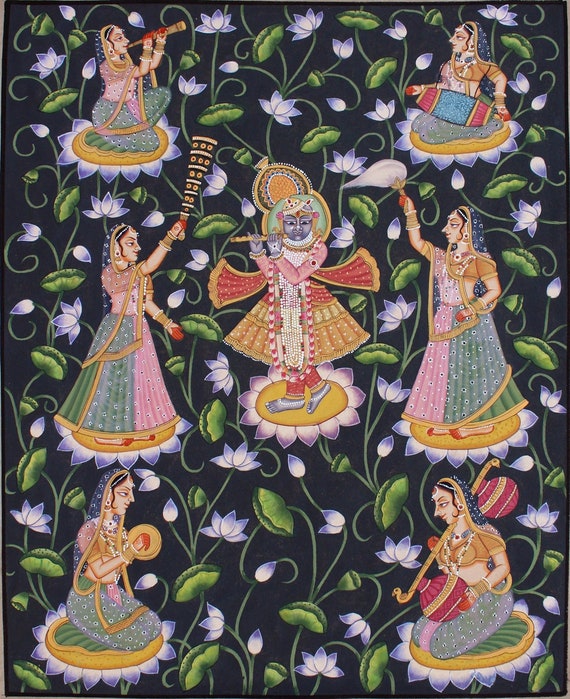
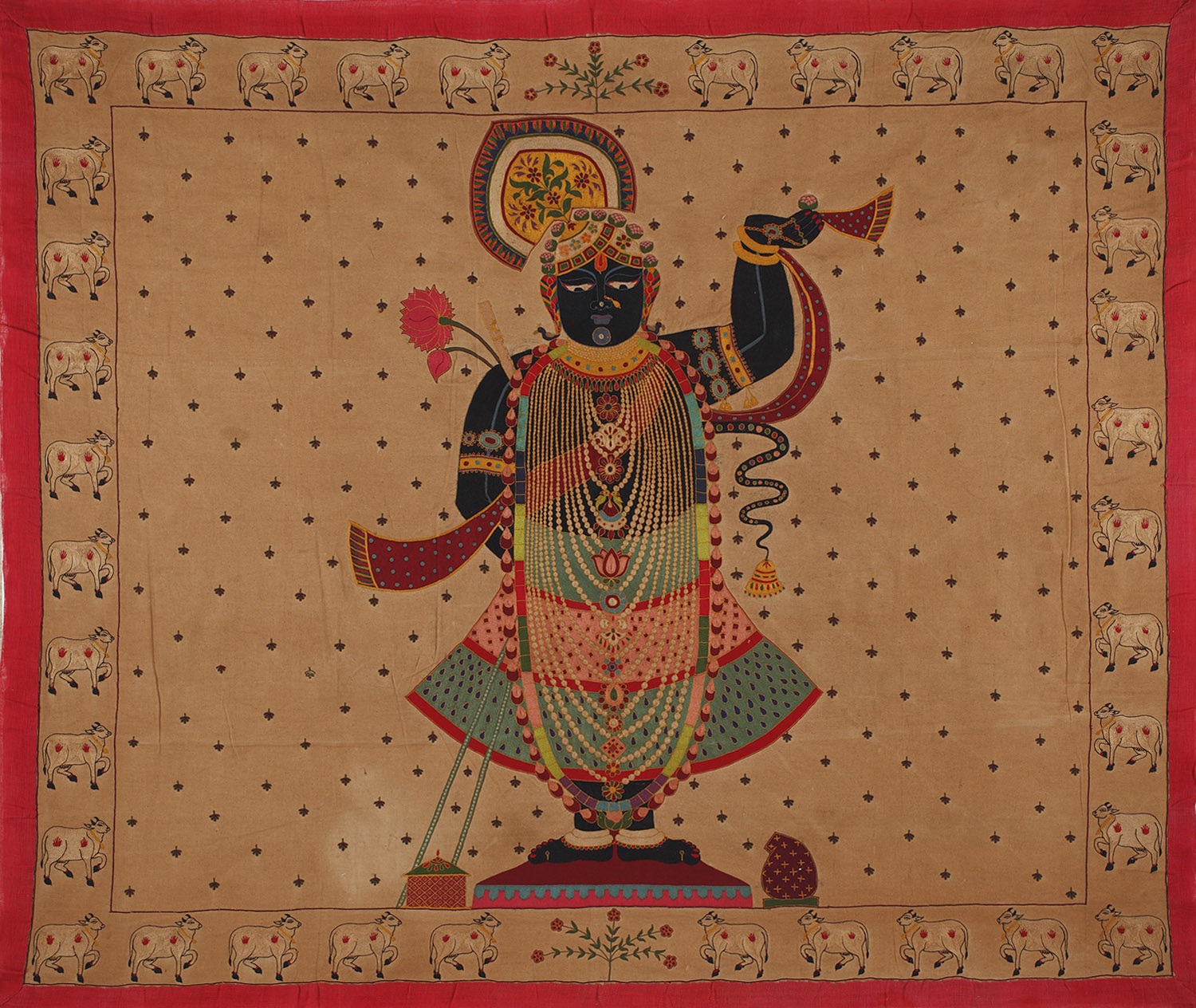

The word Pichhwai stands for hanging at the back. Nathdwara painting covers these and similar works in other genres, especially Indian miniature paintings.
Like the Pushtimarg tradition, the Nathdwara paintings originated in the Deccan region of India, but are now mainly associated with Western India.

Pichhwai paintings have become the main export items of Nathdwara region, and are in much demand among foreign visitors.
The artists live mostly in ‘Chitron Ki Gali’ (Street of paintings) and ‘Chitrakaron Ka Mohallah’ (colony of painters), and form a close knit community with constant interaction.
Often a Pichhwai painting is a group effort, where several skillful painters work together under the supervision of a master artist.


As a country with a diverse heritage and rich culture, India is home to some of the most beautiful folk art traditions, which are admired around the world. Each part of India has its own form of art.
The folk art forms of India are abundant in its vibrancy and beauty. Colourful patterns, elaborate designs, and the presence of religious and mystical elements are the essential features of Indian folk art.
These folk arts are instrumental in showcasing the ethnic mosaic of culture and heritage that India possesses.
The popular folk art forms include Pattachitra Paintings from Odisha, Madhubani Paintings from Bihar, Phad and Pichwai Paintings from Rajasthan, and the Warli Painting from Maharashtra.
Among these varied styles of painting, one of the most popular and renowned styles of painting is the Pichwai Paintings.
The Pichwai Paintings are believed to have originated about four centuries ago. It hails from the state of Rajasthan, more precisely from the Nathdwara town in the state.
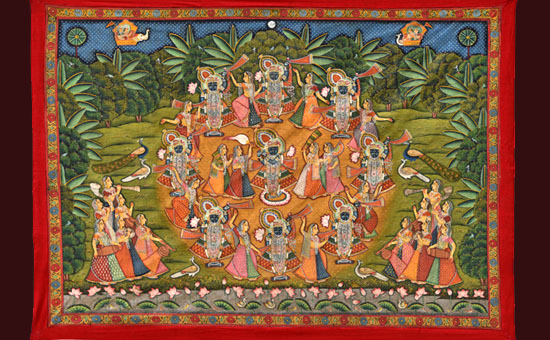
The word “Pichh” means back, and the word “wai” translates to textile hanging.
The Pichwai paintings were usually hung behind the deity in the shrines of Srinathji.
These paintings have an acute attention to detail and were more intricate and detail-oriented than the traditional Phad paintings from Rajasthan.

The paintings are famous for their spectacular depiction of tales from the life of Lord Krishna. Usually made on cloth, these paintings are stately and stunning.
The Pichwai Painting demands intense focus and immense skill on the part of the artist. These paintings have to be painted with much precision. The artists pay profound attention to even the smallest detail in the paintings.

The Pichwai paintings are a splendid and glorious addition to the many textile arts, prominent in the country.
The Pichwai art tradition has been passed through generations in a quite sacred manner.
The painting is not taught in an educational institution but is learned under the guidance of a master artist. To this day, this is the practice adopted to master this art.

The mesmerizing Pichwai paintings portray Lord Krishna as Shrinathji. Apart from Lord Krishna; Radha, Gopis, and the images of lotuses, also have a prominent presence in the paintings.
This textile painting also depicts various Indian festivals such as Diwali, Janmashtami, Holi, Sharad Purnima, Raas Leela and Anakoot, among others.
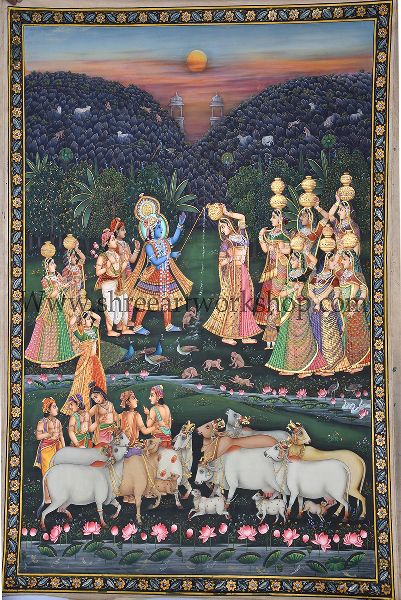
The Pichwai painting is created on a piece of handspun cotton, through a few steps.
First, the sketches of the paintings are created with the utmost attention. Later these images are painted using only organic paints, colours, and natural brushes.
Coals, Indigo, silver, are some of the significant sources of these natural colours used for the Pichwai paintings.

The painting is also sometimes enhanced using gems, and crystals. The fact that the painting requires pure gold in its making adds even more to the value of the Pichwai paintings.
The Pichwai paintings are quite colourful and have several colours drawn and combined with creativity and skill. The main colours used are red, green, and yellow, among others.
The Pichwai paintings are renowned for their depiction of festivals such as Janmashtami, Sharad Purnima, Raas Leela, Diwali, among others through their paintings.
The paintings which illustrate festivals, portray Srinathji differently as compared to the Pichwai paintings of other festivals.
For instance, in the Pichwai paintings of Janmashtami, the festival which celebrates the birth of Lord Krishna, the idol of Srinathji, is placed at the centre of the painting.
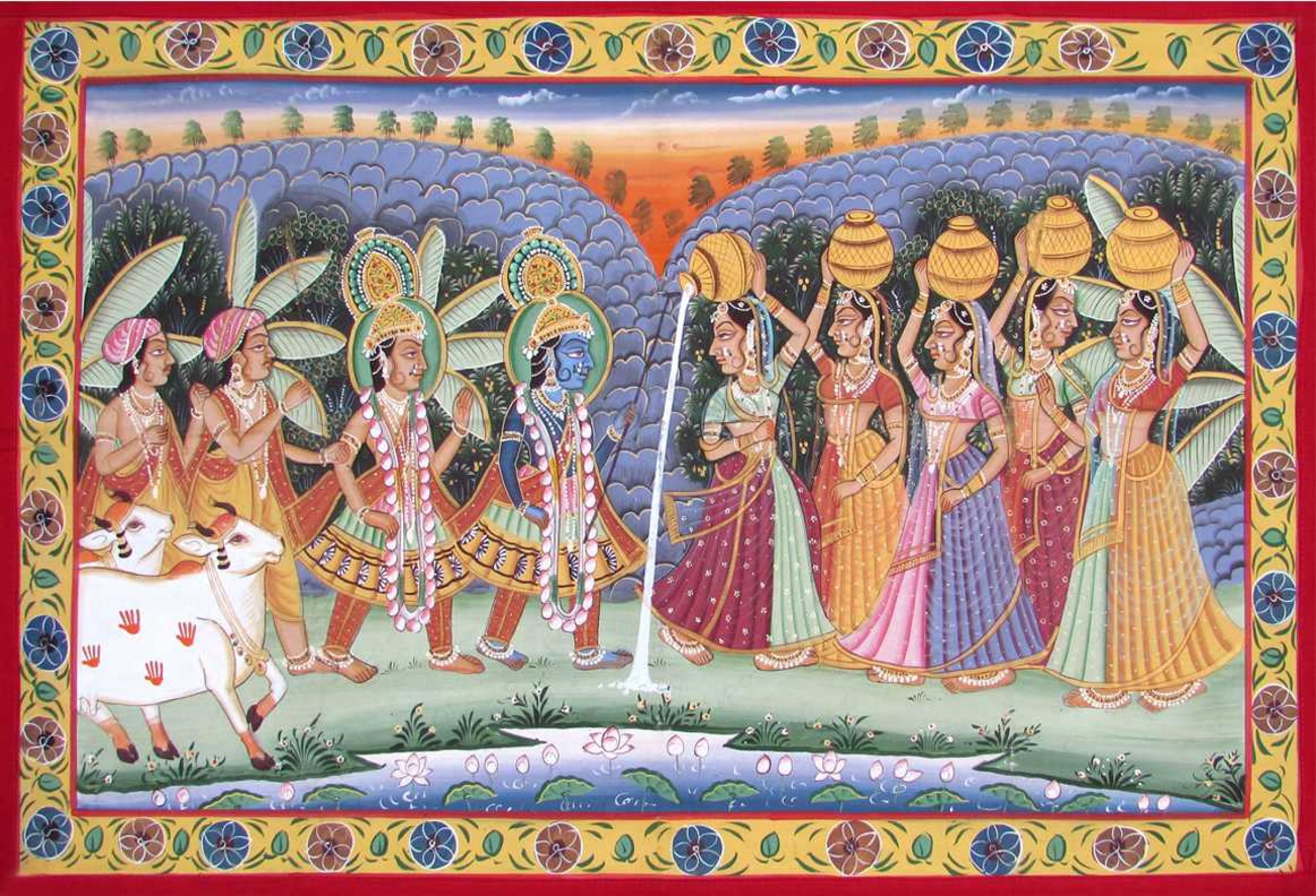
In the paintings depicting Sharad Purnima too, Shrinathji is presented as the central figure. The Pichwai paintings of Sharad Purnima, depicts the full moon, in all its glory, adding a distinct beauty to the artwork.
The powerful imagery of the painting is perhaps what attracts the observer the most. The characters represented in the paintings wear elaborate and attractive costumes with vibrant colours.
The characters are created in such a manner that the observer immediately establishes a connection with them.
Painted in a miniature style, the Pichwai paintings are quite mesmerizing and manage to capture the attention of the observer the moment they set eyes on it.
The unique colour combination, the intense detail-oriented style, and the intricate manner of painting make the Pichwai paintings one of a kind.
Today, the Pichwai paintings have many admirers from around the world and are highly valued in the country. The attractive design and the intricate details, along with the powerful imagery, make the Pichwai paintings one of a kind.
Though the art pieces are of religious significance, nowadays, it is not uncommon to see the Pichwai paintings being collected by art lovers. The paintings are said to evoke positive and joyous feelings in the observers.
Since the paintings portray joyous occasions, it induces positive thoughts and feelings in the observer.
The folk art tradition is said to have had a very long history in India, and its history can be traced to centuries ago. Folk art is one of the most integral factors that represent the culture of India.
Each state in the country has its own unique, distinct, and beautiful kind of art termed folk art. Each of these is distinguishable from the other through the manner and style of the painting, along with what it represents.
The notable and the impeccable quality of these folk arts have, have earned the attention of art lovers from around the world. Owing to this fact, the arts and crafts of India are exceptionally high in demand among foreigners.
Apart from this, the aesthetic feel and the sense of identity provided by these folk arts are beyond comparison. Hence it would not be wrong to say that the culture or tradition of a country or a state in India will be incomplete without its folk art form.
The Madhubani paintings, which are popular for their vibrant colours and patterns, the Warli folk paintings, which take their name from the Warli tribe, are renowned for their depiction of the daily social events of the Warli tribe, are just a few among the many fascinating folk arts practised in India.
